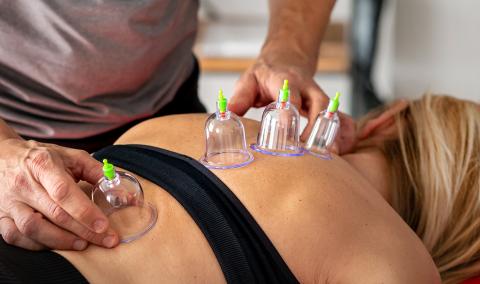As men age, urination can become more difficult as a result of the prostate's natural growth.
This condition, called benign prostate hyperplasia or BPH (sometimes called benign prostate hypertrophy), puts pressure on the urethra and disrupts regular bathroom habits.
At MU Health Care, our board-certified urologists have multiple options to treat BPH tailored to each patient's needs and goals. Every prostate is a different size and shape, and each person has different needs. Our goal is to help you understand the condition and each treatment option.
We will work with you to provide complete testing and evaluation so that you find a treatment option that best fits your needs and goals. Treatments may include lifestyle changes, medication, a minimally invasive procedure or one of our more advanced surgical procedures. Our dedicated experts will work with you to find the best treatment option for you.
MU Health Care is proud to offer many of the latest treatments, including:
- Medications
- Water vapor therapy
- UroLIFT
- Holmium laser ablation of the prostate (HoLAP)
- Holmium laser enucleation of the prostate (HoLEP)
- Transurethral resection of prostate (TURP)
- Minimally invasive or open prostate removal
MU Health Care is a leader in BPH treatments, and our providers have experience in the most up-to-date treatments, which includes being the first and only provider of HoLAP and HoLEP procedures in mid-Missouri.
What is Benign Prostate Hyperplasia?
BPH is the most common urinary tract condition in men older than 50, according to the National Institutes of Health. As the name suggests, benign means the enlargement is not caused by cancer, and men who experience BPH are not at an increased risk of developing prostate cancer.
BPH affects approximately 50% of men ages 51-60, and these numbers increase with age, affecting as many as 80% of men in their 70s and 80s.
Some men experience few or no symptoms due to an enlarged prostate gland, while others find the condition to have a dramatic impact on their quality of life. However, even men without symptoms can develop problems from the condition such as urinary tract infections and bladder muscle damage over time.
BPH is almost always a progressive condition that gets worse without treatment because prostate size usually increases with age. As the prostate continues to grow it can further negatively affect the bladder and urethra. If you are experiencing symptoms, it's important to discuss them with your doctor.
BPH Symptoms
The most common symptoms of BPH develop because of a narrowed urethra or overworked bladder, and include:
- Urinating frequently (more than eight times) during waking hours
- Waking up at night to urinate, also called nocturia
- Difficulty urinating with a weakening stream or hesitation to begin the stream
- Sudden uncontrolled desire to urinate or lack of control of urination, also called urinary urgency
- Discomfort during urination, often caused by straining or pushing
- Urinary retention, or the inability to empty the bladder, which in severe cases can progress to requiring catheterization to empty the bladder
It's common that men will experience no symptoms, or mild enough symptoms that they brush it off as an annoyance. Men should not accept that symptoms of BPH are a normal part of aging because treatment options have improved dramatically in recent years. Discuss your daily urinary concerns with your primary care doctor or a urologist.
If you are completely unable to urinate or barely able to urinate, seek medical attention at once.
Causes of BPH
The cause of BPH is still being studied and can be difficult to define for two main reasons: Prostate sizes naturally vary among men, and the prostate continues to grow as men age. BPH is likely a result of many factors, such as hormones, family history and genetics, metabolic syndromes, obesity, inflammation, aging and lifestyle, rather than one single cause.
Diagnosing BPH
Prostate size is measured by volume in milliliters (mL). In general, a prostate that is larger than 30 mL, about the size of a ping pong ball, is considered enlarged. BPH is diagnosed using multiple criteria, including age, family history, physical examination and testing. These tests may include:
- Blood or urine sample tests to rule out other causes
- Prostate symptom score tests, which assess the severity of symptoms
- Prostate-specific antigen blood test
- Urine flow rate tests
- Imaging tests such as ultrasound, CT or MRI, to check the size of the prostate
- Cystoscopy, a test that uses a small camera to check for urinary blockage or problems
How We Treat BPH
BPH can be successfully managed with several approaches, including lifestyle changes, medication and other forms of noninvasive or surgical treatment.
If you are diagnosed with BPH, our team of urologists will work with you to review your history and symptoms, and perform other tests as needed to recommend a treatment that best fits your lifestyle.
Medication
Medication is the first treatment option for men who have flow disruptions or other symptoms caused by BPH. Several options are available. If you are experiencing symptoms, talk to your primary care doctor or schedule an appointment with our urology experts. We will work with you and your existing care team to tailor your treatment to your needs and goals.
Some medications used to treat BPH, such as tamsulosin (Flomax) and finasteride, work well for some men who have mild prostate enlargement. However, most people are not aware that these medications do not always work forever, and that there are long-term solutions available that replace the need for medication.
If you do not find adequate relief from medical therapy, your urologist may recommend changing to a procedural approach instead.
Minimally Invasive Treatments for BPH
UroLIFT
BPH is, at its core, a "plumbing" condition caused by an enlarged prostate putting too much pressure on the urethra. UroLIFT is a minimally invasive procedure that can be performed in a clinic or operating room and uses small clips to lift the prostate and remove pressure from the urethra.
UroLIFT is an outpatient procedure, which means most patients return home the same day. Some may need a catheter for 1-2 days.
Water Vapor Therapy
This uses water vapor (steam) pressure to remove excess prostate tissue, shrinking the prostate gland to restore normal urinary function. The treatment takes about an hour and patients can return home right after it is completed.
This treatment is approved for use in men 50 and older who have been diagnosed with BPH. Because water vapor therapy is nonsurgical, it removes the risk of bleeding and complications from general anesthesia found in all surgical procedures. It also uses catheterization and local anesthetic, rather than an incision, which means the risk of infection or excess bleeding is greatly reduced.
Prostate Artery Embolization
Prostate artery embolization (PAE) is a minimally invasive procedure performed by an interventional radiologist to remove some of the prostate's blood supply. Your care team will guide a special catheter through a vein in your groin to block some blood flow to the prostate, which may cause it to grow more slowly or stop growing.
Surgical Treatment
Holmium Laser Ablation of the Prostate (HoLAP)
Holmium laser ablation of the prostate (HoLAP) is a precise surgical procedure for BPH that uses laser energy to safely ablate, or remove, excess prostate tissue. MU Health Care is the only provider of HoLAP in mid-Missouri. This precise surgery is done without any incisions and helps to reshape the outflow channel of urine from the bladder through the prostate. There is usually minimal pain with this surgery. It requires general anesthesia in an operating room.
It is an excellent option with men with smaller prostates but significant urinary symptoms or blockage of the bladder. This one-time procedure carries low bleeding risk and can remove the need to take BPH medications or have repeat visits to manage the symptoms associated with BPH.
For most men, a HoLAP procedure takes around one hour, and most patients return home the same day after a few hours in a recovery room. Patients can expect to use a temporary catheter to aid in healing for a few days. Your urologist will help you understand what to expect.
Holmium Laser Enucleation of the Prostate (HoLEP)
Holmium laser enucleation of the prostate (HoLEP) is considered by many urologists to be the modern gold standard of BPH treatment. It is an advanced treatment for prostates 40 mL or larger in size, up to 500mL. It uses a laser without any incisions to precisely and fully cut away or remove the excess prostate tissue causing problems to minimize the chances of needing another similar treatment in the future.
HoLEP requires general anesthesia in an operating room. It is a one-time procedure that usually has minimal pain, carries a low bleeding risk and is very unlikely to need revisions. Many men can stop their BPH medications after receiving HoLEP and do not need additional urologist treatment or follow-up care afterward.
Most patients who receive HoLEP treatment can go home the same day after a few hours in a recovery room. Patients can expect to return home with a temporary catheter to aid in healing for a few days.
Transurethral Resection of the Prostate
Transurethral resection of the prostate (TURP) is a procedure that has been used for decades to treat BPH. Studies have shown it to be safe and effective, particularly in treating prostates with volumes smaller than 80mL in size.
TURP procedures require general anesthesia in an operating room, and patients can expect to use a temporary catheter for 1-2 days after treatment.
Minimally Invasive or Open Prostate Removal
Prostate removal surgery, also called prostatectomy, is a procedure that requires incisions to remove excess prostate tissue. It can remove all or part of the prostate gland. Though it is more commonly known to treat prostate cancer, a simple prostatectomy can also be performed where only part of the prostate is removed via similar techniques to relieve symptoms of BPH.
At MU Health Care, our urologic surgery team offers both a traditional open prostatectomy surgery, which uses one larger abdominal incision, and minimally invasive robot-assisted prostatectomy, which uses several smaller incisions across the abdomen.
Because a prostatectomy is a more invasive approach, patients can expect a longer recovery time, including the use of a catheter for 1-2 weeks following treatment.
Risks of BPH Treatment
Each treatment option has potential risks and side effects. Before treatment, our urology team will recommend treatment options based on the unique factors of each patient's case, and discuss risks, side effects and other considerations, such as medications, health concerns and prostate size, to achieve the best results for each patient.



























